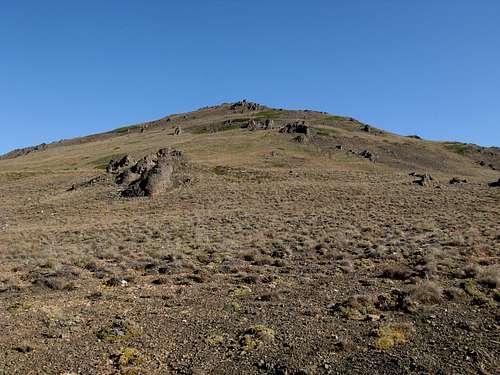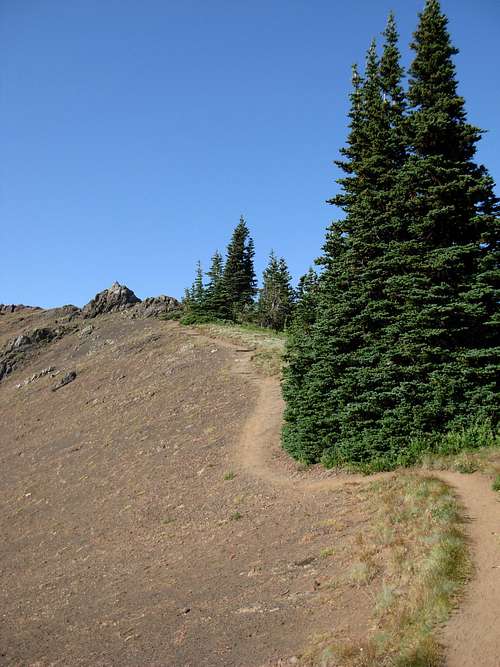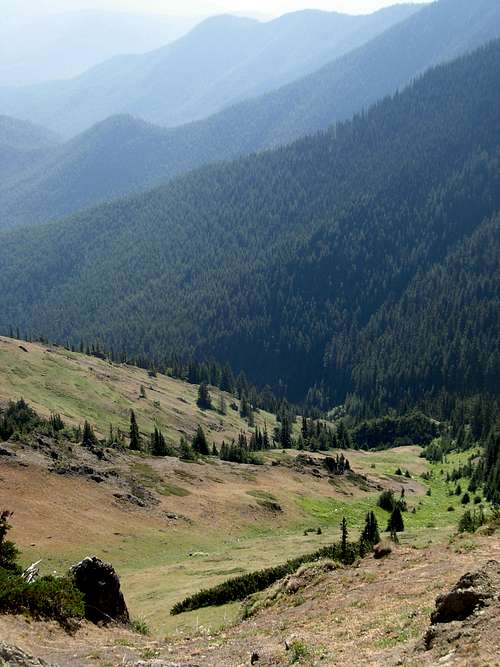|
|
Mountain/Rock |
|---|---|
|
|
47.95475°N / 123.25958°W |
|
|
Clallam |
|
|
Hiking |
|
|
Spring, Summer, Fall, Winter |
|
|
6007 ft / 1831 m |
|
|
Overview
Blue Mountain is a regionally significant peak found in the northern region of the Olympic Mountains range. The mountain is located northeast of popular hiking destination Grand Ridge, and has a great vantage point of the northern and central Olympic Mountains. In fact, the location of the mountain is so ideal that the Deer Park Ranger Station is located on its southwest side.
Several major trails originate at Blue Mountain, including Elk Mountain Trail (also known as Grand Ridge Trail) Deer Ridge Trail, and Three Forks Trail. The south side of the mountain also has Deer Park Campground. The views from the mountain are also well-noted. The panoramic views to the north include Vancouver Island, Mount Baker, and Glacier Peak. The panoramic views to the south include Tyler Peak, Mount Baldy, Gray Wolf Ridge, The Needles, Mount Deception, Mount Cameron, Grand Valley (and Grand Ridge), Maiden Peak, Hurricane Ridge, and Mount Angeles.
The summit (6007' elevation) is reached via the Rainshadow Trail, a 0.5-mile roundtrip loop trail with limited elevation gain. The trail is so-named because Mount Olympus, the highest point of the Olympic Mountains, located southwest of the mountain, casts a major rainshadow for the mountain. Mount Olympus receives over 200" of precipitation annually, and the mountain's massive rainshadow causes Blue Mountain to only receive 50" of precipitation annually. This causes the mountain to be fairly dry and barren most of the year.
Some trees, mostly Douglas-fir and lodgepole pine, are scattered on the mountain slopes. Lightning strikes play an integral part to the success of the growth and replenishment of these trees. Douglas-firs have thick insulating bark that withstand most lightning storms and intense heat, but every few hundred years hot fires kill even these trees, allowing young Douglas-firs to have room to germinate and grow afterward.
Lodgepole pines have cones that require intense heat to open and germinate. In example, in 1988 a human-created campfire got out of control and ravaged the slopes of the mountain and the surrounding area, but the heat of the wildfire helped open the resin-sealed lodgepole pine cones and released a flurry of seeds into the charred (but nutrient-enriched) soil, helping to ensure the longevity and success of the species in the area.
Getting There
From Sequim, Washington:
1) Drive west along US-101 for 12 miles to Deer Park Road. Turn south onto Deer Park Road.
2) Follow Deer Park Road for 18 miles, to the Blue Mountain/ Rainshadow Trail parking area.
NOTE #1: The last nine miles of Deer Park Road is gravel/ unpaved.
NOTE #2: The Rainshadow Trail parking area is beyond, and higher, than the Deer Park Ranger Station and Deer Park Campground.
NOTE #3: Shortly before the Deer Park Campground, Deer Park Road comes to a "Y" intersection. Stay on the left road, heading towards Deer Park Campground and Three Forks Trail, and then at the campground intersection head left up the road climbing the west/southwest slopes of Blue Mountain.
Red Tape
Blue Mountain is located within Olympic National Park. Park fees, rules, and regulations apply. Backcountry permits are required for overnight stays.
If climbing this peak, try not to step on the wildflowers and other fragile plant life. Stay on the Rainshadow Trail.
Camping
No camping is allowed on Blue Mountain, EXCEPT at Deer Park Campground. Please contact the Olympic National Park for details concerning current conditions and fees to stay at that campground.
Deer Park Campground has 14 sites, fire pits with grates, picnic tables, accessible pit toilets, and animal-proof food storage. Potable water is not available. Firewood gathering prohibited.





